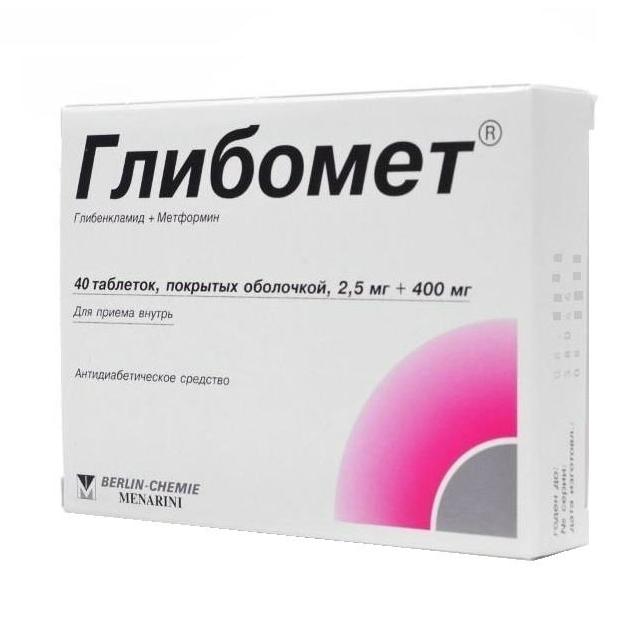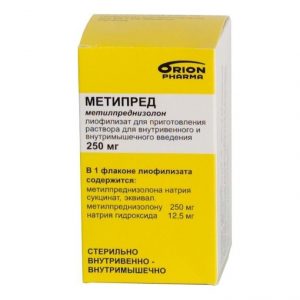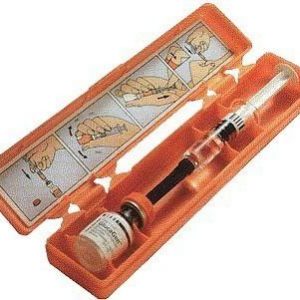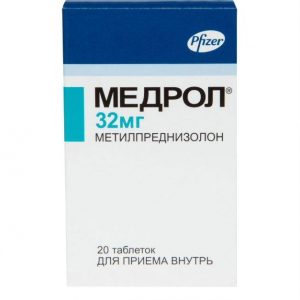Description
Latin name
GLIBOMET ®
Release form
Coated tablets.
Packaging
40 pcs
¤ °Ñ ¼ ° º ¾ » ¾ ³ ¸Ñ Ñ º ¾ ´ ¹ÑÑ ² ¸
¾ ¼ ± ¸ ½ ¸Ñ ¾ ² ° ½ ½ ¹ ¿ Ñ ¾Ñ ° »Ñ ½ ¹ ³ ¸ ¿ ¾ ³ » ¸ º ¼ ¸Ñ Ñ º ¸ ¹ ¿Ñ ¿ °Ñ °Ñ , Ñ ¾ ´ Ñ ¶ ¸Ñ ¿Ñ ¾ ¸ · ² ¾ ´ ½ ¾ ÑÑ »ÑÑ ¾ ½ ¸ » ¼ ¾Ñ ² ¸ ½ II ¿ ¾ º ¾ » ½ ¸Ñ ¸ ± ¸ ³Ñ ° ½ ¸ ´. ± » ° ´ ° Ñ ¿ ° ½ ºÑ °Ñ ¸Ñ Ñ º ¸ ¼ ¸ ² ½ ¿ ° ½ ºÑ °Ñ ¸Ñ Ñ º ¸ ¼ ÑÑÑ ºÑ ° ¼ ¸.
» ¸ ± ½ º » ° ¼ ¸ ´ – ¿Ñ ¾ ¸ · ² ¾ ´ ½ ¾ ÑÑ »ÑÑ ¾ ½ ¸ » ¼ ¾Ñ ² ¸ ½ II ¿ ¾ º ¾ » ½ ¸Ñ. ¡Ñ ¸ ¼Ñ » ¸Ñ Ñ Ñ Ñ ºÑ Ñ ¸Ñ ¸ ½ÑÑ » ¸ ½ ° ¿ÑÑ ¼ Ñ ½ ¸ ¶ ½ ¸Ñ ¿ ¾Ñ ¾ ³ ° Ñ ° · ´Ñ ° ¶ ½ ¸Ñ ³ »Ñ º ¾ · ¾ ¹ – º » Ñ ¾ º ¿ ¾ ´ ¶ »Ñ ´ ¾Ñ ½ ¾ ¹ ¶ » · , ¿ ¾ ² Ñ ° Ñ ÑÑ ²ÑÑ ² ¸Ñ »Ñ ½ ¾ÑÑ Ñ º ¸ ½ÑÑ » ¸ ½Ñ ¸ ÑÑ ¿ ½Ñ ³ ¾ Ñ ²Ñ · ² ° ½ ¸Ñ Ñ º » Ñ º ° ¼ ¸- ¼ ¸Ñ ½Ñ ¼ ¸, Ñ ² » ¸Ñ ¸ ² ° Ñ ² Ñ ² ¾ ± ¾ ¶ ´ ½ ¸ ¸ ½ÑÑ » ¸ ½ °, ÑÑ ¸ » ¸ ² ° Ñ ´ ¹ÑÑ ² ¸ ¸ ½ÑÑ » ¸ ½ ° ½ ° ¿ ¾ ³ » ¾Ñ ½ ¸ ³ »Ñ º ¾ · ¼ ÑÑ ° ¼ ¸ ¸ ¿ Ñ ½ÑÑ, Ñ ¾Ñ ¼ ¾ · ¸Ñ » ¸ ¿ ¾ » ¸ · ² ¶ ¸Ñ ¾ ² ¾ ¹ Ñ º ° ½ ¸. ¹ÑÑ ²Ñ Ñ ² ¾ II ÑÑ ° ´ ¸ ¸ Ñ ºÑ Ñ ¸ ¸ ¸ ½ÑÑ » ¸ ½ °.
Ñ Ñ ¾Ñ ¼ ¸ ½ ¾Ñ ½ ¾Ñ ¸Ñ ÑÑ º ³Ñ Ñ ¿ ¿ ± ¸ ³Ñ ° ½ ¸ ´ ¾ ². ¡Ñ ¸ ¼Ñ » ¸Ñ Ñ Ñ ¿ Ñ ¸Ñ Ñ ¸Ñ Ñ ºÑÑ ÑÑ ²ÑÑ ² ¸Ñ »Ñ ½ ¾ÑÑ Ñ Ñ º ° ½ ¹ º ´ ¹ÑÑ ² ¸Ñ ¸ ½ÑÑ » ¸ ½ ° ( ¿ ¾ ² Ñ ° Ñ Ñ ²Ñ · ² ° ½ ¸ ¸ ½ÑÑ » ¸ ½ ° Ñ Ñ Ñ ¿Ñ ¾Ñ ° ¼ ¸, ÑÑ ¸ » ¸ ² ° Ñ ÑÑÑ ºÑ ¸ ½ÑÑ » ¸ ½ ° ½ ° ¿ ¾ÑÑ Ñ Ñ ¿Ñ ¾Ñ ½ ¾ ¼ ÑÑ ¾ ² ½ ), Ñ ½ ¸ ¶ ° Ñ ²Ñ °Ñ ² ° ½ ¸ ³ »Ñ º ¾ · ² º ¸Ñ Ñ ½ ¸ º , ¿ ¾ ´ ° ² »Ñ Ñ ³ »Ñ º ¾ ½ ¾ ³ ½ · ¸ ¾ º ° · ² ° Ñ ± » ° ³ ¾ ¿Ñ ¸ÑÑ ½ ¾ ´ ¹ÑÑ ² ¸ ½ ° » ¸ ¿ ¸ ´ ½ ¹ ¾ ± ¼ ½, Ñ ¿ ¾Ñ ¾ ±ÑÑ ²Ñ Ñ Ñ ¼ ½ÑÑ ½ ¸Ñ ¸ · ± Ñ ¾Ñ ½ ¾ ¹ ¼ °ÑÑ Ñ » ° Ñ ¿ °Ñ ¸ ½Ñ ¾ ² Ñ Ñ °Ñ °Ñ ½ ¼ ´ ¸ ° ± Ñ ¾ ¼, ° Ñ ° º ¶ ¾ º ° · ² ° Ñ Ñ ¸ ±Ñ ¸ ½ ¾ » ¸Ñ ¸Ñ Ñ º ¾ ´ ¹ÑÑ ² ¸ · ° ÑÑ Ñ ¿ ¾ ´ ° ² » ½ ¸Ñ ¸ ½ ³ ¸ ± ¸Ñ ¾Ñ ° ° ºÑ ¸ ² °Ñ ¾Ñ ° ¿ » ° · ¼ ¸ ½ ¾ ³ ½ ° Ñ º ° ½ ² ¾ ³ ¾ Ñ ¸ ¿ °.
¸ ¿ ¾ ³ » ¸ º ¼ ¸Ñ Ñ º ¸ ¹ ÑÑÑ ºÑ ¿pe ¿ °Ñ °Ñ ° Ñ ° · ² ¸ ² ° Ñ ÑÑ Ñ Ñ · 2 Ñ ¸ ¿Ñ ¾ ´ ¾ » ¶ ° Ñ ÑÑ 12 Ñ.
¡ ¸ ½ Ñ ³ ¸Ñ ½ °Ñ º ¾ ¼ ± ¸ ½ °Ñ ¸Ñ ´ ²ÑÑ ´ ¹ÑÑ ²ÑÑÑ ¸Ñ º ¾ ¼ ¿ ¾ ½ ½Ñ ¾ ² ¿Ñ ¿ °Ñ °Ñ ° – ÑÑ ¸ ¼Ñ » ¸Ñ ÑÑÑ ¸ ¹ ÑÑÑ ºÑ ¿Ñ ¾ ¸ · ² ¾ ´ ½ ¾ ³ ¾ ÑÑ »ÑÑ ¾ ½ ¸ » ¼ ¾Ñ ² ¸ ½ ² ¾Ñ ½ ¾Ñ ½ ¸ ¸ ² Ñ ° ± ¾Ñ º ¸ Ñ ½ ´ ¾ ³ ½ ½ ¾ ³ ¾ ¸ ½ÑÑ » ¸ ½ ° ( ¿ ° ½ ºÑ °Ñ ¸Ñ Ñ º ¾ ² ¾ · ´ ¹ÑÑ ² ¸ ) ¸ ¿Ñ Ñ ¼ ¾ ² » ¸Ñ ½ ¸ ± ¸ ³Ñ ° ½ ¸ ´ ° ½ ° ¼ Ñ Ñ ½ÑÑ ¸ ¶ ¸Ñ ¾ ²ÑÑ Ñ º ° ½ ¸ (ÑÑÑ ÑÑ ² ½ ½ ¾ Ñ ² » ¸Ñ ½ ¸ ÑÑ ² ¾ ½ ¸Ñ ³ »Ñ º ¾ · – ² ½ ¿ ° ½ ºÑ °Ñ ¸Ñ Ñ º ¾ ² ¾ · ´ ¹ÑÑ ² ¸ ) ¸ ¿ Ñ ½ ¾Ñ ½ÑÑ Ñ º ° ½Ñ (Ñ ½ ¸ ¶ ½ ¸ ³ »Ñ º ¾ ½ ¾ ³ ½ · °), ¿ ¾ · ² ¾ »Ñ Ñ ¿Ñ ¸ ¾ ¿Ñ ´ » ½ ½ ¾ ¼ Ñ ¾ ¾Ñ ½ ¾Ñ ½ ¸ ¸ ´ ¾ · Ñ ¼ ½ÑÑ ¸Ñ Ñ Ñ ¾ ´ Ñ ¶ ° ½ ¸ º ° ¶ ´ ¾ ³ ¾ º ¾ ¼ ¿ ¾ ½ ½Ñ °. Ñ ¾ ¿ ¾ ¼ ¾ ³ ° Ñ ¸ · ± ¶ °Ñ Ñ ÑÑ · ¼ Ñ ½ ¾ ¹ ÑÑ ¸ ¼Ñ »ÑÑ ¸ ¸ – º » Ñ ¾ º ¿ ¾ ´ ¶ »Ñ ´ ¾Ñ ½ ¾ ¹ ¶ » · , ¸, Ñ » ´ ¾ ² °Ñ »Ñ ½ ¾, Ñ ¼ ½ÑÑ ¸Ñ Ñ Ñ ¸Ñ º ½ °Ñ ÑÑ ½ ¸Ñ ÑÑ ½ ºÑ ¸ ¸, ° Ñ ° º ¶ ¾ ± Ñ ¿ Ñ ¸ ² ° Ñ ¿ ¾ ² Ñ ½ ¸ ± · ¾ ¿ °Ñ ½ ¾ÑÑ ¸ ³ ¸ ¿ ¾ ³ » ¸ º ¼ ¸Ñ Ñ º ¸Ñ ¿Ñ ¿ °Ñ °Ñ ¾ ² ¸ Ñ ½ ¸ ¶ ½ ¸ Ñ °ÑÑ ¾Ñ ¿ ¾ ± ¾Ñ ½ Ñ ÑÑÑ ºÑ ¾ ².
» ¸ ± ½ º » ° ¼ ¸ ´
Ñ °Ñ ² ° ½ ¸ ¸ Ñ °Ñ ¿Ñ ´ » ½ ¸
ÑÑ Ñ ¾ ¸ ´ ¾ÑÑ °Ñ ¾Ñ ½ ¾ ¿ ¾ » ½ ¾ (84%) ° ±Ñ ¾Ñ ± ¸Ñ Ñ Ñ ÑÑ ¸ · ¢, ²Ñ ¼Ñ ´ ¾ÑÑ ¸ ¶ ½ ¸Ñ Cmax Ñ ¾ÑÑ ° ² »Ñ Ñ 1-2 Ñ. ¡ ²Ñ · ² ° ½ ¸ Ñ ± » º ° ¼ ¸ ¿ » ° · ¼ – 97%.
Ñ ° ± ¾ » ¸ · ¼ ¸ ² ² ´ ½ ¸
¾ÑÑ ¸ ¿ ¾ » ½ ¾ÑÑ ÑÑ ¼ Ñ ° ± ¾ » ¸ · ¸Ñ Ñ Ñ ÑÑ ² ¿ Ñ ½ ¸ ´ ¾ ½ ° ºÑ ¸ ² ½ Ñ ¼ Ñ ° ± ¾ » ¸Ñ ¾ ². ² ¾ ´ ¸Ñ ÑÑ ¿ ¾Ñ º ° ¼ ¸ (50%) ¸ Ñ ¶ »ÑÑÑ (50%). T1/2 Ñ ¾ÑÑ ° ² »Ñ Ñ ¾Ñ 5 ´ ¾ 10 Ñ.
Ñ Ñ ¾Ñ ¼ ¸ ½
Ñ °Ñ ² ° ½ ¸ ¸ Ñ °Ñ ¿Ñ ´ » ½ ¸
¾ÑÑ °Ñ ¾Ñ ½ ¾ ¿ ¾ » ½ ¾ ° ±Ñ ¾Ñ ± ¸Ñ Ñ Ñ ÑÑ ² ¢, ± ÑÑ Ñ ¾ Ñ °Ñ ¿Ñ ´ »Ñ Ñ ÑÑ ² Ñ º ° ½ ¸, ¿Ñ ° ºÑ ¸Ñ Ñ º ¸ ½ Ñ ²Ñ · ² ° Ñ ÑÑ Ñ ± » º ° ¼ ¸ ¿ » ° · ¼ ºÑ ¾ ² ¸.
Ñ ° ± ¾ » ¸ · ¼ ¸ ² ² ´ ½ ¸
¿ ¾ ´ ² Ñ ³ ° Ñ ÑÑ ¼ Ñ ° ± ¾ » ¸ · ¼Ñ ² ¾Ñ ³ ° ½ ¸ · ¼ , ² ² ¾ ´ ¸Ñ ÑÑ ² ½ ¸ · ¼ ½ ½ ½ ¾ ¼ ² ¸ ´ ¿Ñ ¸ ¼ÑÑ ÑÑ ² ½ ½ ¾ ¿ ¾Ñ º ° ¼ ¸ ¸, Ñ °ÑÑ ¸Ñ ½ ¾, Ñ Ñ · º ¸Ñ Ñ ½ ¸ º. T1/2 Ñ ¾ÑÑ ° ² »Ñ Ñ ¿Ñ ¸ ± » ¸ · ¸Ñ »Ñ ½ ¾ 7 Ñ.
Indications
Type 2 diabetes mellitus with ineffective diet therapy and previous therapy with sulfonylureas or biguanides, as well as other oral hypoglycemic agents.
Contraindications
Type 1 diabetes mellitus
gestational diabetes mellitus
diabetic ketoacidosis, diabetic precoma, diabetic coma
lactic acidosis (including a history of) malabsorption, acute liver disease, and acute liver function which can lead to a change in kidney function (dehydration, severe infection, shock, intravascular administration of iodine-containing contrast agents)
renal failure or impaired renal function (in creatinine level above 135 mmol / l for men and above 110 mmol / l for women)
infectious diseases, gangrene, major surgical interventions, injuries, acute massive blood loss, extensive burns and other conditions, insulin therapy requiring
hypoxic conditions (heart or respiratory failure, recent myocardial infarction, shock, severe respiratory diseases)
period 48 h before and 48 h after radioisotope or radiological studies with the introduction of iodine-containing contrast medium
period for 48 h onset and 48 hours after surgery
dystrophic diseases (myotonic dystrophy, lipodystrophy)
leukopenia
porphyria
chronic alcohol ism, acute alcohol intoxication
adherence to a strict hypocaloric diet (less than 1000 kcal / day)
glucose-6-phosphate dehydrogenase deficiency
pregnancy and lactation (breastfeeding)
children and adolescents under 18 years of age are more sensitive to other , as well as other components of the drug.
It is not recommended to use the drug in patients older than 60 years who perform heavy physical work, which is associated with an increased risk of developing lactic acidosis in them.
Caution: the drug should be used in case of febrile thyroid disease (with impaired function) of hypofunction of the anterior pituitary and / or adrenal cortex.
Use during pregnancy and lactation
The drug is contraindicated in pregnancy and lactation (breastfeeding).
Composition
1 tablet contains:
Active substances:
glibenclamide 2.5 mg
metformin hydrochloride 400 mg.
Excipients:
microcrystalline cellulose – 65 mg,
corn starch – 57.5 mg,
silicon dioxide colloid – 20 mg,
gelatin – 40 mg,
glycerol – 17.5 mg,
talc – 15 mg stearate – 7.5 mg.
Shell composition:
cellulose acetate 2 mg,
diethyl phthalate 0.5 mg,
talc 2.5 mg.
Dosage and administration of
The drug is taken orally with food.
The dosage regimen and duration of treatment are determined by the attending physician depending on the state of carbohydrate metabolism and on the concentration of glucose in the blood.
The initial dose is usually 1-3 tablets / day with a further gradual selection of an effective dose until a steady normalization of the concentration of glucose in the blood is achieved.
The maximum daily dose of Glibomet ® is 6 tablets.
Side effects of
Possible side effects when using the drug Glybomet ® are given in descending order depending on the frequency of occurrence:
often ( 1/100, <1/10) infrequently ( 1/1000, < 1/100) rare ( 1/10 000, <1/1000) very rare (<1/10 000), including single messages. From the digestive system: rarely – nausea, vomiting, loss of appetite, abdominal pain, diarrhea, metallic taste in the mouth in some cases – increased activity of liver enzymes. From the hemopoietic system: rarely – leukopenia, thrombocytopenia, erythrocytopenia very rarely – agranulocytosis, hemolytic or megaloblastic anemia, pancytopenia. From the side of the central nervous system: infrequently – a headache. From the skin: rarely – urticaria, erythema, pruritus, photosensitivity. From the side of metabolism: rarely – hypoglycemia very rarely – lactic acidosis. When symptoms of lactic acidosis appear (vomiting, abdominal pain, general weakness, muscle cramps) it is necessary to immediately stop taking the drug and immediately consult a doctor. Other: disulfiram-like reaction while taking alcohol (the most common symptoms are redness of the face and upper body, headache, nausea and vomiting, palpitations, increased blood pressure). Drug Interaction The hypoglycemic effect of insulin is enhanced by MAO inhibitors, non-selective beta-blockers, sulfonamides, anabolic steroids, tetracyclines, clofibrate, cyclophosphamide. The hypoglycemic effect of insulin is lowered by oral contraceptives, glucocorticoids, thyroid hormones, thiazide diuretics, heparin, lithium preparations, tricyclic antidepressants. Under the influence of reserpine and salicylates, both attenuation and enhancement of insulin action are possible. Beta-blockers, clonidine, reserpine may mask the onset of symptoms of hypoglycemia. Ethanol, various disinfectants can reduce the biological activity of insulin. p12ro4404 dfrew4 pfro4 p4ro4 p4ro4 p4ro4 p4ro4 p4ro4 p4ro4 p4ro4 p4 sulfonamide, perhexilin, pheniramidol, miconazole (for oral administration), sulfinpyrazone and ethanol. Adrenaline, ACS, oral contraceptives, thyroid hormone drugs, thiazide diuretics and barbiturates reduce the hypoglycemic effect of the drug Glibomet ®. When used with Glibomet ®, anticoagulants may be enhanced. Co-administration with cimetidine may increase the risk of lactic acidosis. Using beta-blockers can mask the symptoms of hypoglycemia (except for sweating). The use of iodine-containing X-ray contrast drugs (for intravascular administration) can lead to impaired renal function and metformin accumulation, which increases the risk of lactic acidosis. Overdose Symptoms: lactic acidosis (caused by the action of metformin), hypoglycaemia (caused by the action of glibenclamide) are possible. Symptoms of lactic acidosis: severe weakness, muscle pain, respiratory disorders, drowsiness, nausea, vomiting, diarrhea, abdominal pain, hypothermia, decreased blood pressure, reflex bradyarrhythmia, confusion and loss of consciousness. Symptoms of hypoglycemia: hunger, excessive sweating, weakness, palpitations, paleness of the skin, paresthesia in the mouth, tremor, general anxiety, headache, pathological drowsiness, sleep disorders, feeling of fear, impaired coordination of movements, temporary disorders. With the progression of hypoglycemia, loss of self-control and consciousness is possible. Treatment: Immediate discontinuation of the drug and emergency hospitalization are recommended in case of suspected lactic acidosis. The most effective treatment is hemodialysis. With mild hypoglycemia, you should take in a piece of sugar, food or drink with a high carbohydrate content (jam, honey, a glass of sweet tea). In case of unconsciousness, it is necessary to enter 40-80 ml of 40% dextrose (glucose) solution in / in 40-80 ml, then to infuse 5-10% dextrose solution. You can then additionally inject 1 mg of glucagon in / in, in / m or p / k. If the patient does not regain consciousness, it is recommended to repeat these actions. In the absence of effect, intensive care is shown. Storage conditions Keep out of the reach of children at a temperature not exceeding 30 ° C. Expiration 3 years. Deystvuyuschee substances Hlybenklamyd, Metformin pharmacy terms for prescription dosage form dosage form PMA




